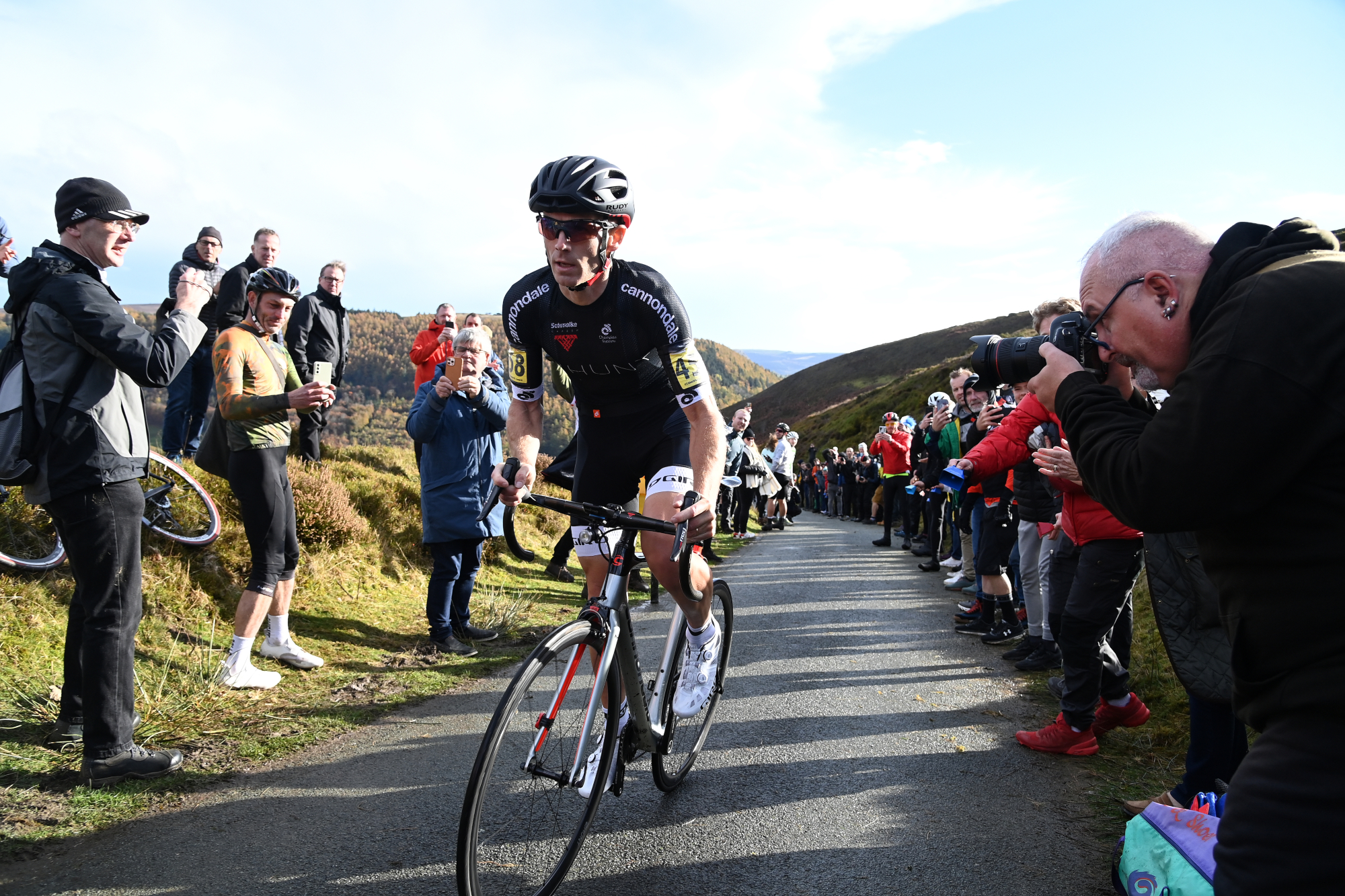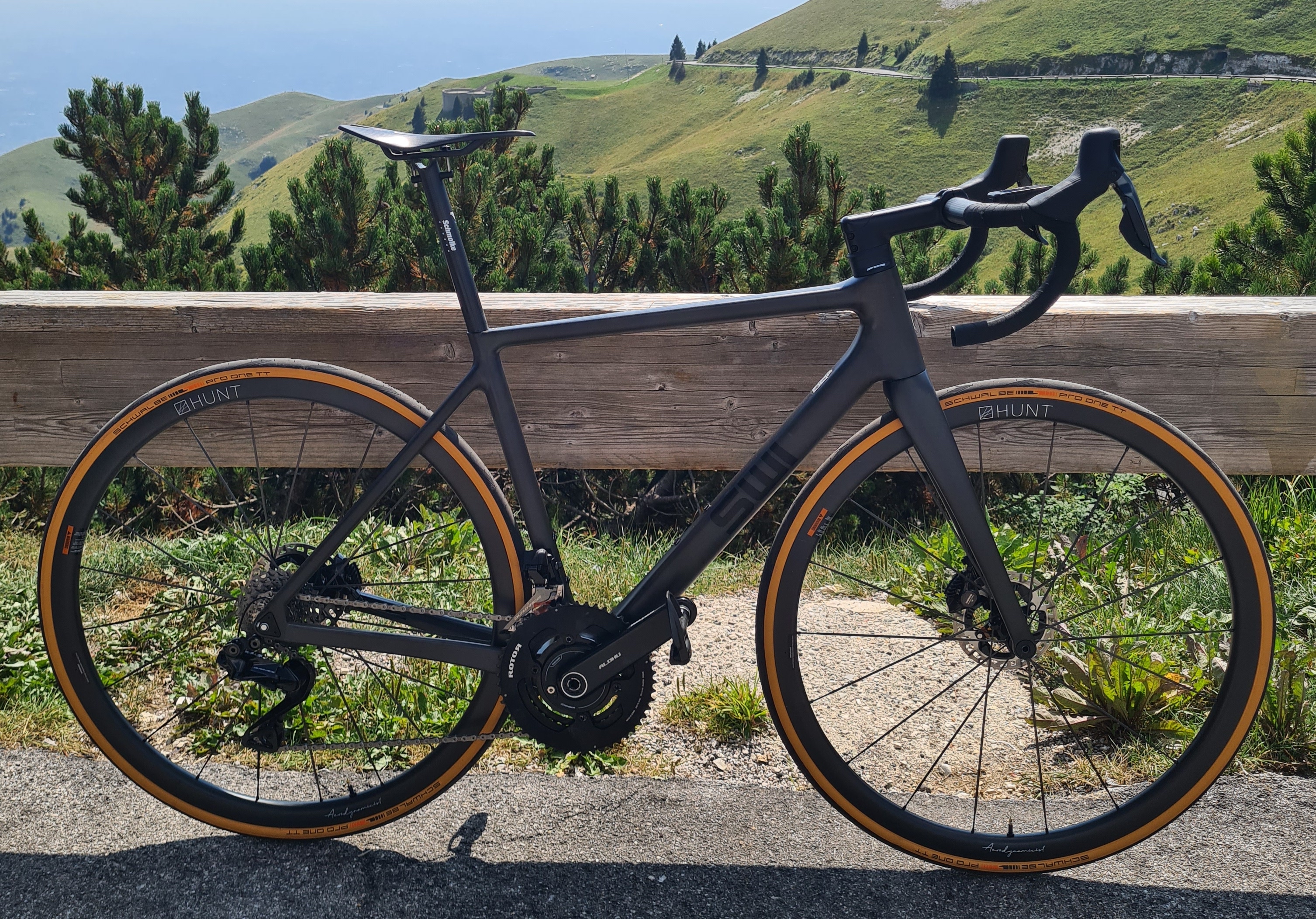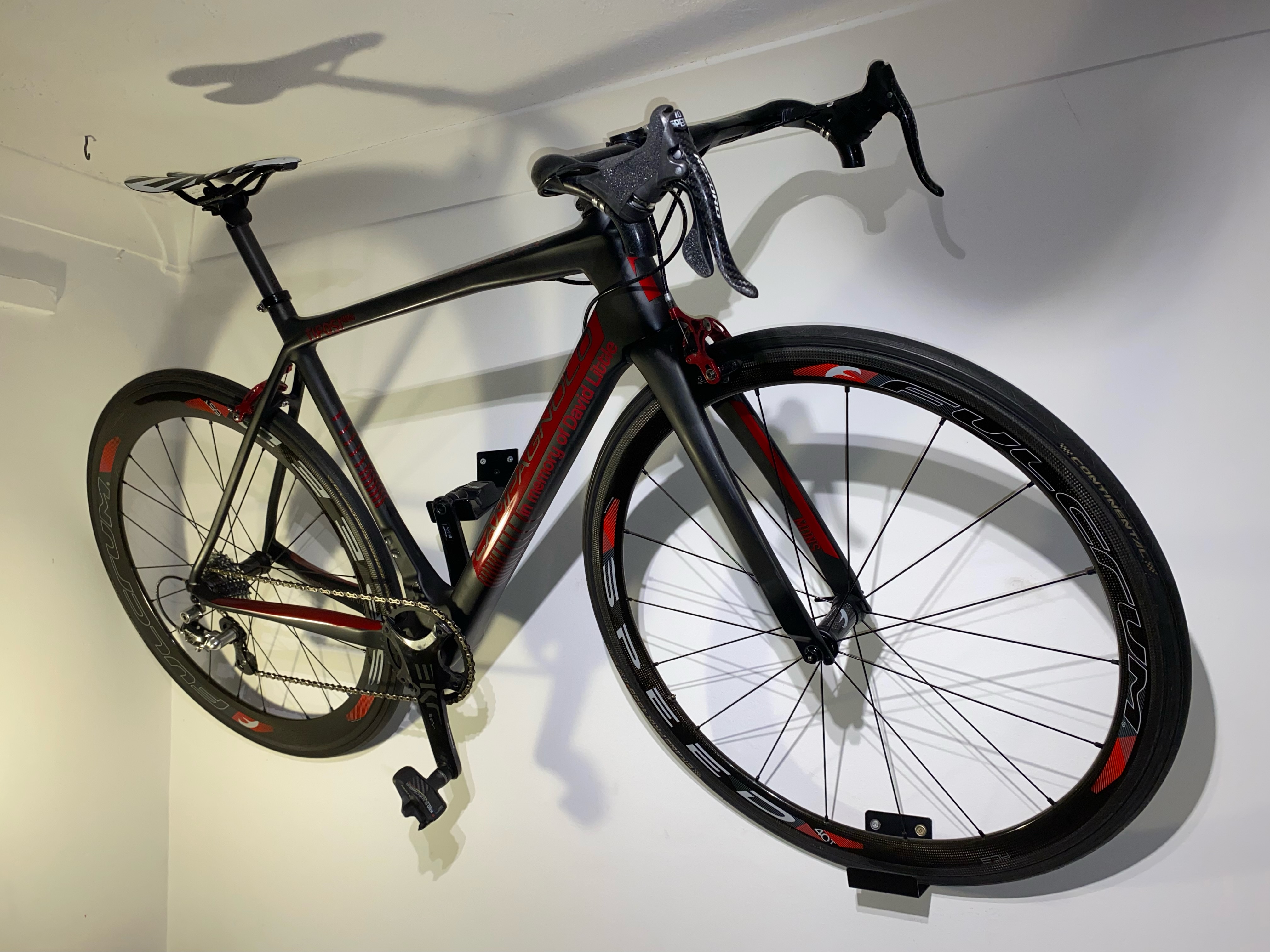
Much of the discussion around going faster on the bike has centred on aerodynamics in recent years, with experts like Chris Boardman and Dan Bigham pointing out exactly how much speed can be saved by dialling in your bike and your position to slip best through the wind.
However when it comes to hill-climbs, ridden slowly on steep gradients, and usually out of the saddle with a lot of movement going, weight really is a thing. The fun thing about it though, is that hill-climbing isn't governed by the UCI. No UCI equals no UCI weight limit. Time to let rip.
We spoke to two of the UK's quickest uphill types – current national hill-climb champion Andrew Feather, and former champion Bithja Jones – to get the low-down on how to put together the ultimate gravity-defying machine.
It won't come as any great surprise to learn that for both riders, the starting point to any hill-climb machine is always going to be the frame. And even if you don't plan to keep your hill-climb bike solely for going upwards in competitions, the remit remains largely the same as it would for any fast-riding road bike. Light, and stiff.
As well as light weight, "you need proper race geometry and the right stiffness," counsels Jones, who was national hill-climb champion in 2021. "You wouldn't want to go for an endurance frame built for comfort, that's no use. You want good power transfer."
Jones uses a Tifosi Mons frame which is light but not wildly so at 890g, while Feather, who is readying himself for a defence of his men's title in Northumberland later this month, has switched to Swiss start-up brand Swi for this season.
A true monocoque and handmade, the frame's 680g weight is as impressive as its €11,000 (£9,200 / $12,000) price tag is scary.
"It's very, very lightweight," says Feather who, yes, does have a very appropriate surname. "You can feel it's very stiff as well. To build an awesome hill-climb bike you start with a lightweight frame, which is what I've got. Building on that, the next most important thing is really the wheels."

Upward spin
Stiff and lightweight is again the order of the day, and it's worth remembering that there's all the more reason to save weight here as its rotational. However, too light can mean not stiff enough, so the two have to be balanced.
"I've been with [wheel brand] Hunt for quite a few years now, and they make a really lightweight, specific set of hill-climb wheels – they're disc brake actually. They come in at 960 grams."
The Hunt Hill-Climb SL Disc Tubular that Feather refers to is an incredibly light-weight set of hoops, but as he says, they're built specifically for hill-climbs.
Jones uses Fulcrum Speed T carbon wheels – 40mm at the front and 55mm at the rear. They're designed for all-round fast-riding use rather than hills only, but nevertheless top the scales at a very handy 1,300g for the pair.
Both sets of wheels are designed for tubular tyres, which tends to mean a lighter wheelset due to rim construction. In Feather's case in particular, it can also mean a super-light tyre. He uses track tubs with zero puncture protection, which come in at 140g each. This is around 100g less than the Continental GP4000 tubulars that Jones uses.
But he acknowledges that going down this route is a risk, even when you're only racing for a few minutes.
"It's always a balance. You can go to the absolute extreme, making everything as lightweight as possible," he says. "But, you know, there is an added risk of punctures."
But, he adds: "It feels absolutely rapid."
Groupset components are something you can have a bit of fun with on the hill-climb scene. There's no pressure to run the latest, costliest bling, or to make sure everything is matched. On a hill-climb bike, you don't need 11 or 12 sprockets for starters, and while your brakes must be good enough to get you back down the hill safely, sacrificing a degree of performance in favour of light weight is no problem.
Jones's bike is the perfect example of this – she runs an old Campagnolo Record mech with a nine-speed cassette, paired with a Campagnolo Ekar single-ring chainset. Her brakes are "a very old set of rim brakes that are very light" that are fitted with ultra-light cork pads with the retaining grub screws removed for that extra fraction of a percent.
Feather's componentry set-up is on the opposite end of the spectrum – sponsorship deals mean he is able to run a full 12-speed Shimano Dura-Ace Di2.
This would ordinarily be a huge outlay, he concedes, and says: "You can go for the older technology, and build up a rim brake bike. And you can probably pick up a rim brake bike that's next to nothing, almost… you can build up a really lightweight hill-climb bike with older technology."

Chop chop!
It's the finishing kit that sometimes marks out a hill-climb most obviously. The ultra-pared-down carbon saddles used by both Feather and Jones are ostentatiously minimalist, with comfort sacrificed entirely on the altar of weight saving ("I've done 100-kilometre runs on it and it was fine," says Jones, "but it wouldn't be the choice for the long day in the saddle").
Up front, Feather's sponsorship from Schmolke enables him to run super-light but super-expensive kit, while Jones has opted for the effective but economic hack of cutting off the drops of the bars, which she says saves around 200g. She uses minimal bar tape to stop slippage in the rain.
Jones's use of thinner gear cable wire instead of brake cables is another hill-climb-only hack that we really would not recommend trying at home, while Feather's ultra-light computer mount is 3D-printed in Sweden and saves another handful of grams.
One final area to consider is lights, which are compulsory front and rear in UK hill-climbing. Jones recommends her Heath Robinson set-up – essentially a single LED with a coin battery and secured by a zip-tie.
Hopefully this piece has given you a few ideas as to exactly how far you can go when it comes to building up an all-singing, all-dancing, hill-climb-specific weapon. One final piece of advice, though, from Feather – your bike is likely to be a journey rather than a destination, at least at first.
"It's lots of trial and error," he says. "It's not just building up something as lightweight as possible and going out and using it. I think you have to, you have to test things and tweak things."
It sounds like it could be fun – which is just as well, because the same can't usually be said of the racing itself...







